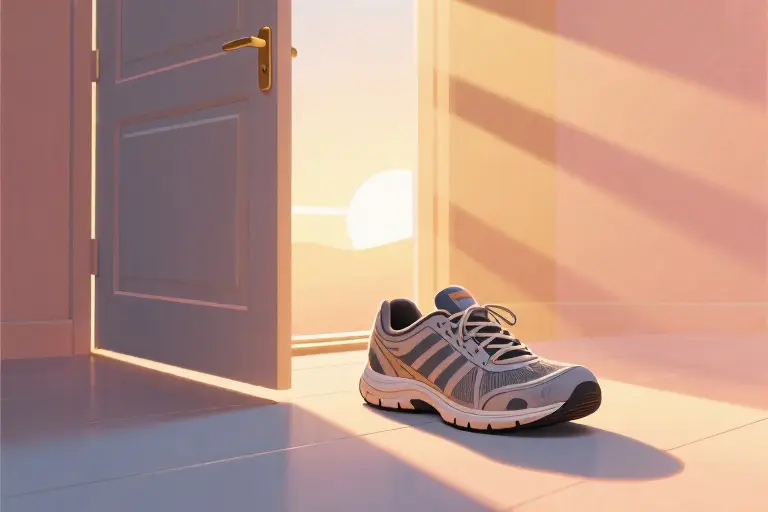The dining table in my apartment has officially become an archaeological site. Layers of unopened mail, half-read magazines, and that mysterious USB cable I swear I’ll need someday form sedimentary strata across its surface. In the closet, a jacket from my college days hangs between blouses with tags still attached, like artifacts in a museum of good intentions. I know every piece tells a story—the problem is, most of these stories ended chapters ago.
Clutter happens to the best of us. That pile of paperwork isn’t laziness crystallized, nor is the overcrowded bookshelf a moral failing. They’re simply the physical manifestations of delayed decisions, of ‘maybe later’ moments stacked up over time. What fascinates me isn’t that we accumulate things—that’s human nature—but why perfectly reasonable people (myself included) can watch Marie Kondo’s Netflix special with earnest enthusiasm, only to find ourselves paralyzed when facing our own overstuffed drawers.
The disconnect lies in assuming organizational skills are universal solutions, like aspirin for headaches. But clutter isn’t a single ailment—it’s a symptom with multiple possible causes. That jacket isn’t just fabric; it’s a time capsule from my twenties. The paperwork avalanche represents not disorganization, but a subconscious fear that discarding that appliance manual might summon the day the toaster rebels. Traditional decluttering advice skips straight to the ‘how’ without addressing the ‘why,’ which explains why those perfectly logical storage systems so often end up abandoned like New Year’s resolutions by February.
Psychological decluttering starts with recognizing that our possessions are external representations of internal states. That stack of unread books? Not paper and ink, but the ghost of your aspirational self. The crowded kitchen counter? A museum of ‘someday’ projects. Until we understand what these items truly represent to us—security, identity, potential—no number of cute baskets or label makers will create lasting change. The path to mindful organization begins not with trash bags and donation boxes, but with honest conversations with ourselves about what we’re really holding onto, and why.
Here’s the liberating truth: your clutter isn’t a character flaw. It’s a series of unmade decisions waiting for the right tools. The jacket can stay or go—but that choice deserves more consideration than a hasty purge fueled by temporary shame. The paperwork will get sorted—not through marathon sessions you’ll dread and postpone, but in brief bursts that respect your brain’s natural rhythms. What if the secret to decluttering isn’t willpower, but understanding how your particular mind interacts with objects? That’s where our journey begins.
Decoding Your Clutter DNA
The jacket hanging in my closet for two decades isn’t just fabric and stitching – it’s a time capsule from my twenties, a tangible ‘what if’ that whispers possibilities every time I consider letting go. This emotional entanglement with objects reveals the first of four clutter personalities I’ve identified through years of struggling with organization systems that never quite stuck.
The Four Clutter Archetypes
- The Sentimentalist (that’s me with the vintage jacket)
- Keeps: Items with emotional narratives
- Psychological driver: Fear of losing connected memories
- Telltale sign: ‘This represents who I was when…’
- The Procrastinator
- Keeps: Unfinished projects, unread books
- Psychological driver: Avoidance of decision fatigue
- Telltale sign: ‘I’ll deal with this later’ (spoiler: later never comes)
- The Anxiety Collector
- Keeps: Duplicates, ‘just in case’ items
- Psychological driver: Need for control in uncertainty
- Telltale sign: ‘But what if I need twelve phone chargers?’
- The Visual Stimulator
- Keeps: Display items that ‘spark joy’
- Psychological driver: Sensory overload preference
- Telltale sign: Surfaces become permanent exhibit spaces
The Psychology Behind the Piles
That stack of papers on my dining table? It’s not just disorganization – it’s a physical manifestation of decision paralysis. Studies show the mere act of deciding whether to keep or discard an item consumes mental energy equivalent to solving a simple math problem. When faced with hundreds of such micro-decisions, our brains default to the path of least resistance: keeping everything.
Anxiety-driven clutter often stems from our brain’s threat detection system gone haywire. That collection of empty jam jars isn’t rational – it’s your amygdala whispering ‘resources might become scarce.’ Understanding this evolutionary hangover helps separate logical needs from survival-mode fiction.
Your Turn: The 3-Item Challenge
- Identify the most emotionally charged items in your immediate space (that jacket, the gift you never used, the half-finished craft project)
- For each, complete this sentence: “I’m keeping this because , and that makes me feel .”
- Notice any patterns – are your reasons rooted in past nostalgia, future anxiety, or present overwhelm?
This isn’t about immediate action, but awareness. Like recognizing your sleep patterns before fixing them, understanding your clutter personality transforms random struggles into solvable puzzles. Next time we’ll explore why standard advice fails for your particular type – and what actually works.
Remember: Your clutter isn’t moral failure. It’s psychology made visible.
Why Organization Advice Fails You
The closet organization video made it look so simple. Color-coordinated hangers, neatly folded sweaters in acrylic boxes, and that satisfying ‘after’ shot of a minimalist paradise. Yet three days later, my sweaters are back in a crumpled pile on the chair I optimistically call a ‘dressing station.’ This isn’t laziness—it’s a fundamental mismatch between how advice is given and how our brains actually work.
The Rhythm Mismatch
Most decluttering methods assume linear progress: start at the door, move clockwise, finish by sunset. But human attention doesn’t operate like a Roomba. We spot emotional triggers randomly—the concert tee in the back corner sparks memories before we’ve ‘properly’ addressed the shoe rack. Traditional systems punish this natural exploration, creating frustration that abandons projects midway.
Cognitive research shows we make better decisions when following our attention’s natural flow. A Yale study found participants who organized based on spontaneous interest retained tidiness 40% longer than those following rigid systems. Your brain’s meandering path through clutter isn’t a flaw—it’s an undervalued feature.
The Overload Factor
Marie Kondo’s famous ‘spark joy’ question seems straightforward until you’re holding your third-grade report card. Is this joy? Nostalgia? Guilt? The mental calculus required to evaluate each item exhausts decision-making reserves. University of Minnesota studies reveal that after just ten minutes of such choices, we experience ‘decision fatigue,’ leading to either impulsive purges or paralyzed inaction.
This explains why elaborate sorting systems fail. Asking overwhelmed minds to categorize items into ‘keep/donate/recycle/repurpose’ boxes is like demanding someone recite poetry during a marathon. Simplicity isn’t dumbed-down—it’s neurologically necessary.
The Emotional Blind Spot
Mainstream advice often treats possessions as mere objects, ignoring their role as memory anchors. That ‘useless’ souvenir snow globe isn’t clutter—it’s the tangible echo of your first solo trip. Stanford psychologists found attempting to discard such items without addressing their emotional weight triggers subconscious rebound accumulation.
I learned this after donating my grandmother’s chipped mixing bowl in a ruthless purge. For months afterward, I inexplicably bought replacement bowls, none feeling ‘right.’ Only when I photographed it with notes about her apple cake recipe did the impulse fade. Sometimes what looks like clutter is actually unprotected history.
Perfectionism’s Dirty Little Secret
Here’s the paradox: the more flawless the organizational system, the faster it collapses. Like New Year’s resolutions that crumble after one missed gym day, hyper-structured approaches lack flexibility for real life. Behavioral scientists call this the ‘what-the-hell effect’—once a system feels compromised, we abandon it entirely.
My friend’s ‘a place for everything’ pantry worked beautifully until her toddler discovered the grain bins. Rather than adapt, she stopped maintaining the system altogether. Now she jokes it’s a ‘free-range snack zone.’ All-or-nothing thinking turns small messes into total surrender.
Recalibrating the Journey
Effective organization isn’t about finding the ‘right’ method—it’s about continuous adjustment. Think of it like sailing: you set a course but constantly tweak for shifting winds. Some days you’ll make major progress; others you’ll simply keep the boat upright. Both are valid.
Start by observing your natural habits without judgment. Notice where piles accumulate (likely spots where decisions stall). Identify which tasks feel energizing versus draining (maybe folding soothes you while filing induces dread). These patterns reveal your personal organizational rhythm—the foundation any successful system must honor.
Instead of asking ‘Why can’t I stick to this?’
try \’What about this approach fights my brain?’
The answer might surprise you. My ‘failed’ attempts revealed I need visual reminders of what I own (sorry, beautiful closed bins). Now I use clear containers—not magazine-worthy, but sustainably functional.
Remember: the goal isn’t to win at organizing, but to stop wrestling with your space daily. That looks different for everyone, and that’s not just okay—it’s how effective systems are born.
Brain-Friendly Decluttering Tools
The gap between knowing you should declutter and actually doing it often comes down to neuroscience. Our brains resist abrupt changes, which explains why marathon cleaning sessions feel so exhausting. The solution? Work with your brain’s wiring instead of against it.
The 5-Minute Decision Warm-Up
Neuroimaging studies show decision-making activates the prefrontal cortex, a region that fatigues like overworked muscles. This explains why after sorting through a closet, you’ll likely abandon a half-filled donation bag. The ‘5-minute rule’ leverages dopamine’s reward mechanism: by limiting sessions to tiny bursts, we trick our brain into associating decluttering with achievement rather than depletion.
Try this now:
- Set a visible timer for 300 seconds
- Choose 3 items within arm’s reach (a pen, mug, or that lone sock)
- Apply the traffic light system:
- Green = Actively used (keep accessible)
- Yellow = Seasonal/sentimental (store labeled)
- Red = Unused over 6 months (donate/toss)
The magic lies in the interruption – stopping mid-process creates psychological tension that makes you more likely to resume later.
Sentimental Items: The Three-Step Release
That concert tee from 2008 isn’t fabric – it’s solidified memory. Behavioral psychologists recommend this gradual detachment:
- Story Capture: Photograph the item while verbalizing its significance (“This was my first road trip with Sarah”). Audio recordings work wonders for tactile objects.
- Function Transformation: Can the essence serve differently? Frame a swatch of that college hoodie as art, or repurpose grandma’s quilt into cushion covers.
- Ritual Farewell: Light a candle when donating heirlooms, or write a thank-you note to discarded items. These ceremonies satisfy our brain’s need for closure.
Visual Hackery for Immediate Relief
When deep decluttering isn’t feasible, employ these perception tricks:
- Color Containment: Designate a single hue for storage boxes in each room (blue for office supplies, green for linens). Monochromatic groupings register as ‘organized’ to our pattern-seeking brains.
- Lighting Layers: Angle lamps to create brightness gradients – well-lit zones appear tidy even when adjacent areas hold clutter. Studies show warm lighting (2700K-3000K) reduces stress responses to disorder.
- Strategic Blank Space: Leave 30% of shelves/walls empty. Our visual cortex interprets partial vacancy as intentional design rather than unfinished cleaning.
Remember: These aren’t cheats but neurological bridges. By making progress visible (stacked boxes look neater than spread piles) and reducing cognitive load (fewer decisions per session), you’re engineering motivation for deeper work later.
The Sustainable System: Maintaining Order Without Losing Your Mind
The hardest part about decluttering isn’t the initial purge—it’s preventing the slow creep of chaos from reclaiming your space. Like kudzu vines overtaking a garden, clutter has a way of returning when we’re not looking. But what if maintaining order didn’t require military discipline or constant vigilance?
The Flow of Things: Creating Smart Item Rules
Adopting an ‘inbound logistics’ mindset changed everything for me. Before any new possession crosses my threshold, it must pass three questions:
- Will I use this within the next 90 days?
- Does this spark genuine joy (not guilt or obligation)?
- Could I easily replace this if needed later?
The ‘one in, two out’ rule became my safety net. Buying new shoes? Two older pairs get donated. This automatic balancing act prevents accumulation while honoring natural lifestyle changes. For sentimental items, I created a ‘memory box’ with strict size limits—when it’s full, adding something new means choosing something old to let go.
The 15-Minute Reset Ritual
Every Sunday at 10am, my phone reminds me to do a ‘home health check.’ Setting this recurring appointment eliminated the ‘I’ll do it later’ trap. The rules are simple:
- Walk through each room with a laundry basket
- Collect anything out of place (limit: 15 minutes)
- Return items to their designated zones
This micro-habit works because it’s time-boxed and focused—no deep cleaning, just resetting the space. Over time, these weekly tune-ups reduced my need for massive cleanouts by about 80%.
Reading the Warning Signs
Clutter has tells—early signals that systems are breaking down. My personal checklist:
- Mail piling up unopened for >3 days
- ‘Temporary’ items staying past two weeks
- Starting sentences with ‘I’ll just leave this here for now…’
When three or more signs appear, I know it’s time for a ‘system audit.’ Usually, the solution isn’t more organizing—it’s simplifying an overcomplicated process. Last month, realizing I was avoiding my closet led to replacing a fussy storage system with simple hooks and open bins.
The secret isn’t creating perfect order, but building responsive systems that adapt with you. Like training a puppy, consistency matters more than perfection. Some weeks the 15-minute reset becomes 30; sometimes the ‘one in’ rule bends for special occasions. The goal isn’t spotlessness—it’s creating enough structure so your space serves you, not the other way around.
What’s your earliest warning sign that clutter is gaining ground? For me, it’s when the kitchen counter disappears under a layer of… well, everything. That’s when I know it’s time to pause, reset, and remember: sustainable order is a practice, not a destination.
The Gentle Art of Starting Small
The hardest part of decluttering isn’t the physical act of sorting or discarding—it’s overcoming that initial mental hurdle. Before we wrap up, let’s address the elephant in the room: you don’t need to overhaul your entire living space today. In fact, you shouldn’t.
Right now, look around and identify three items within your immediate line of sight that don’t belong where they are. A coffee mug that migrated to your bookshelf. That stack of unopened mail on the windowsill. The sweater draped over your chair that hasn’t been worn since winter. These are your first three recruits in what will become an ongoing conversation with your space.
Here’s what makes this approach different from typical decluttering advice:
- Micro-decisions matter more than massive purges
The brain responds better to frequent small victories than occasional grand gestures. Processing three items activates the same reward pathways as tackling thirty, without triggering decision fatigue. - Progress beats perfection every time
That half-empty drawer you organized counts. The cleared corner of your desk counts. Measuring improvement in square inches rather than square footage reframes success in achievable terms. - Maintenance trumps marathon sessions
Fifteen minutes of daily attention creates more lasting change than eight-hour weekend wars on clutter. Like brushing teeth, small consistent acts prevent major buildup.
As you handle those first three items—whether relocating, donating, or discarding—notice how your relationship with the object shifts when viewed through this lens. That sweater isn’t just fabric; it’s a decision you’ve been postponing. The mail isn’t paper; it’s unmade choices. The mug isn’t ceramics; it’s a habit of temporary solutions becoming permanent.
Next week, when you inevitably notice that particular corner of your home—perhaps the one you’ve walked past blindly for months—what will it whisper about the changes you’ve begun? Maybe nothing dramatic. Possibly just slightly easier breathing room. Perhaps the quiet satisfaction of a single clear surface reflecting back at you.
This isn’t about creating Instagram-worthy interiors. It’s about cultivating spaces that serve rather than suffocate you—one conscious choice at a time. Your home should be your ally, not your accuser. And that transformation begins with three simple items, right here, right now.





